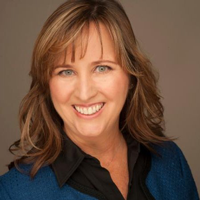Building Your Professional Communities
Communities have always been an important part of my personal and professional life – even more so now that I, like many others around the world, am living under a ‘stay-at-home’ order due to the COVID-19 pandemic.
There are many different types of communities; each is built on a shared interest or experience. In this column I want to talk a little about the different types of communities, the value each provides and how to create and cultivate the ones that will benefit you personally and professionally.
Hopefully, we all have personal communities. These would be supportive groups of family, friends, neighbors, fellow parishioners (if you’re a churchgoer, as I am), you get the idea. These are all important and helpful, but sometimes you may want to surround yourself with people who understand your work world.
This is where professional communities come in. I am lucky to have two different communities of past co-workers, from two different jobs. And we are all lucky to have formal email industry communities like the Email Experience Council (eec), #EmailGeeks, Email Sender and Provider Coalition (ESPC), M3AAWG, Women of Email (WOE) and, of course, Only Influencers (OI). Each one is different and has its own focus, culture, and benefits for members; it is surprisingly not redundant to belong to a few or even all of them.
But there are three other types of professional communities that I want to talk about here:
- Career peers
- Customer Councils
- Target Audience Tribes
Career Peers
 This is a more specialized version of the professional communities I spoke of above. In this case, the members aren’t just in your industry, they are in the same discipline, at the same level, that you are. They may work at the same company that you do, or you may work at different companies.
This is a more specialized version of the professional communities I spoke of above. In this case, the members aren’t just in your industry, they are in the same discipline, at the same level, that you are. They may work at the same company that you do, or you may work at different companies.
In this type of community, you have similar day-to-day work experiences. This means that it’s a great place to discuss tools and resources to do your job better or more efficiently, brainstorm about how to address workplace challenges, and network when/if you’re looking for a new opportunity. This type of community is also a great place to blow off steam when you’ve had a bad day or share your successes with when things go your way.
Typically, these types of internal company communities arise out of either (a) great team building or (b) tremendous adversity. Think the boss who fosters good relationships or the management team that changes course every six months.
But you can and should build these types of communities on your own, sans the management intervention, with people within or outside of your own organization. Here’s how you do it.
For an internal organization group:
This works best in larger organizations; it will be impossible to do in a small organization where you are the only email marketing person (if this is you, read on to the next paragraph for an alternative). Host a lunch (virtual during COVID, hopefully in-real-life in the future) and invite the peers in your organization. These would be people within your company with the same or similar job title as you have, working on different segments of the market or different products. Create a list of a few constructive, non-controversial, non-political questions about things you have in common to start the discussion.
We had a community like this at a small publishing firm where I worked; there were three different divisions with 5 marketing managers, and we’d get together for lunch once a month. It was a tremendous resource; we were all doing the same thing for different publications but for the same corporate parent. We’d swap what was working and what wasn’t with regard to marketing tactics and strategies.
For an external organization group:
The process is the same, but identifying potential members is a little trickier. It starts with some industry research. If you go to a conference (or attend one virtually), scan the attendees list for people with job titles the same or similar to yours. Do the same when you read industry blogs – check out the person’s title and see if they are someone at or near your level. You can even just poke around LinkedIn, see who is posting interesting information and check out their profile. Once you identify a few people, let them know that your intention is to form a Career Peer community and ask if they are interested.
Whether it is an internal or external group, as the leader you need to remain vigilant and keep it from devolving into an airing of grievances. You also want to make this a habit: the key to success here is to do this on a regular schedule – I recommend once a month on the same day/time (like the first Tuesday at noon or the third Wednesday at 1:00). You may lose some folks along the way, but those who stay will form community bonds that often last years and span company changes.
Customer Councils
 This is a completely different type of community; it is built to help you understand your customers better.
This is a completely different type of community; it is built to help you understand your customers better.
Here you are inviting current customers to join; the value of the group is mostly to you, so you want to think about what you can give them for participating.
I put my first Customer Council together when I worked for Congressional Quarterly, a respected industry publication. We would pair a presentation by one of our editors (they were rock stars to our readers) with a free lunch and a session that was like a focus group, where we would get feedback on new marketing ideas. We would hold these formal meetings four times a year, often at industry conferences.
I would also check in with members individually via phone when I needed a quick answer or a customer to vet a new initiative we were considering. I had twelve members at a time on that council, for a one-year term; in hindsight, I probably could have made do with six.
To put together a community like this, start with the friendlies – the customer you know who have a positive impression of your product or organization. Don’t know any customers? Ask others in your organization to make some introductions for you. After you have a core group of friendlies, reach out to customer you don’t know who may have a neutral impression of your company. I would steer clear of customers who have a negative perception of your organization – while there are ways to gather feedback, a group setting like this would risk them dampening the discussion.
Target Audience Tribes
 This type of community is related to Career Peers, but with a slightly different focus and end goal. Here you are building a community of people in organizations that (a) market to your same target audience but (b) have products or services which are not competitive to your own.
This type of community is related to Career Peers, but with a slightly different focus and end goal. Here you are building a community of people in organizations that (a) market to your same target audience but (b) have products or services which are not competitive to your own.
The goal here is to share audience intelligence and perhaps identify mutually beneficial ways to work together. This is different from the Career Peers community, where you are there to support each other.
To build a community like this, you again want to leverage industry conferences, blog posts and articles and LinkedIn just as you would to build an external Career Peers community.
The first time I was exposed to this type of community I thought it was a crazy idea, but probably because there was a slight spin on it that is unlikely to work in just about any other industry. The publishing company where I worked had quarterly lunch meetings with – wait for it – the marketing team from our closest competitor. Sounds crazy right? But we were both marketing financial advisory publications (newsletters that advise individual investors on buying – and selling – stocks, options, and other financial instruments). We knew that the average investor subscribed to 3 advisory newsletters, so management had, years before, started these lunches to share audience intelligence, since it wasn’t a zero-sum game.
In Closing
Do you already have one or more of these types of communities in place? Which of these three types of communities would benefit you most right now? We will be discussing this later this week on the Only Influencers discussion list. Not a member? Join here (just $20/month or $200/year)
One more note: I love leading the Only Influencers (OI) community, and would be happy to help build these types of sub-communities within OI – if you’re interested in participating, let me know.

 How to resolve AdBlock issue?
How to resolve AdBlock issue? 
